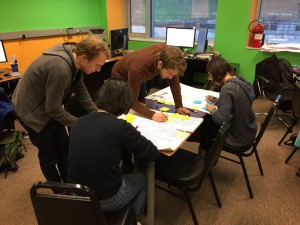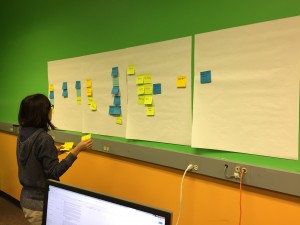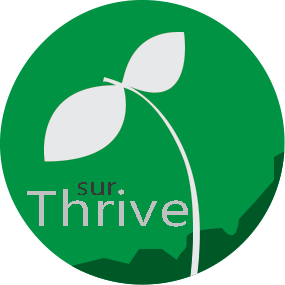This week was focused on ideation in a very serious way. Our goal was to come up with 80 game ideas by the end of the week, with each of the ideas fitting in to one of four strategies for changing people’s beliefs. The four strategies were: Identification with Character (using a character the player identifies with as a means of changing their thinking on a topic), Metaphor (creating a metaphor that shows the player a different way of thinking about a topic), Reflection (forcing the player to stop and reflect on their actions and beliefs), and Cognitive Dissonance (forcing the player to confront a gap or contradiction in their view of a topic). We were tasked with coming up with 10 ideas for each topic, and an additional 40 that could be any topic.
There were a number of challenges with this task, not the least of which was the sheer quantity of ideas we needed to come up with. The first challenge for several of us was actually differentiating between the 4 strategies. Looking at them each in isolation, they seem fairly well-defined and differentiated from each other. However, when you actually sit down to think of game ideas, you find that most games use a combination of all 4 strategies. Unless you’re trying to directly and accurately represent something, your game will by definition be a metaphor. And, in order to teach someone a lesson and change their mind, you will need to use cognitive dissonance to show them the error of their previous beliefs. That moment of change will require some reflection on their part, and almost all games involve the player playing as a character that they will identify with. Still, they often served as good jumping off points if you were ever stuck and unable to come up with an idea, and even if you didn’t use them to generate the idea initially, looking back on an idea it became easier to categorize it into one of the four groups.
In terms of the difficulty of coming up with ideas for the individual strategies, opinions varied, though there were several themes that ran throughout the team. Several people thought that metaphor was the hardest strategy to ideate around, namely because metaphors run the risk of quickly transforming into cliches. At the same time, some people liked metaphor as a strategy, as it allowed for the most creativity and freedom to come up with things that didn’t seem directly about disasters. Several people found that identification with a character was easy, as disaster stories have many characters with which to identify, and coming up with ideas simply involved putting yourself in their shoes. Some people enjoyed reflection because it made the mechanics for moments of reflection obvious, while other people thought it felt unnatural to force people to reflect, and was difficult coming up with fun mechanics that would also encourage reflection.

In terms of the actual brainstorming process itself, people fairly unanimously preferred brainstorming on their own first, then coming together to discuss. The general consensus was that, when brainstorming together, it’s very easy to fall into a “rut”. When one person suggested an idea, it would get into everyone else’s head and influence their subsequent ideas. People preferred letting ideas come naturally, feeling those ideas were more spontaneous and creative. Also, when we came together to brainstorm, since we’d done the same reading and watching for research, our ideas all revolved around the same topics: earthquakes and Hurricane Katrina. Perhaps if we had brainstormed on our own more, our ideas would be more spread out and diverse. I also believe that the broad, unstructured brainstorming we did as a group at the beginning was better than our later, more structured efforts. A couple people wished we had tried more diverse brainstorming techniques, rather than attacking the problem head on. I found that discussing our personal experiences with disasters and disaster media, and doing free association from there led to some of our most fruitful brainstorming, whereas coming together with the specific goal of coming up with X ideas in Y categories was much less productive.

Overall though, we managed to come up with 84 ideas, and while they vary in terms of detail, they’ll be a valuable pool to draw from as we continue to narrow down our ideas to one.
